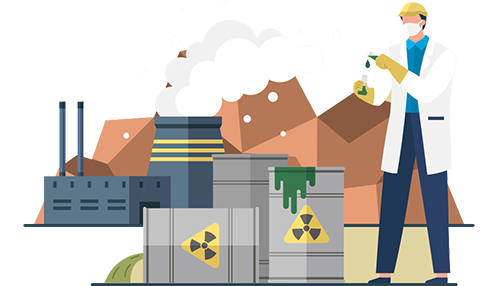October 24th, 2023
One of the biggest environmental challenges we face today is how to best monitor unhealthy quantities of carbon dioxide. CO2, which accounts for 76% of greenhouse gas emissions, is being released into our atmosphere in unprecedented amounts. In order to prevent issues that could stem from red-line levels, our goal as humans is to figure out what to do with potentially perilous concentrations of it.
There has been an increased interest in developing preventative measures to unhealthy degrees of CO2 by growing more trees, manufacturing low-emission transportation options like electric vehicles or promoting public transportation. Carbon capture is looked upon as another possibility yet has failed to show substantial results. For these reasons, much time and resources are going into examining methods to safely utilize carbon dioxide – and plastics is leading the way!
As in the plastics industry overall, the carbon dioxide-based polymer market is steadily growing due to significant demand from end users. According to a Fact MR study, packaging, textiles, construction and automotive industries are in desperate need for this type of constituent with a projected compound annual growth rate (CAGR) of 10.9% over the next 10 years.
As this niche continues to evolve with increased technology and sustainability approaches, CO2 polymers might be the answer to repurposing waste into a truly functional substitute.
What is the basis of the research?
Fossil fuels are produced from the remains of decayed plants and animals which capture carbon dioxide through absorption. Plastics produced directly from this natural occurrence are ecologically advantageous. However, two key questions still need to be answered:
- What is the lifecycle analysis related to carbon capture and polymerization versus fossil fuel extraction and polymerization?
- What impact will CO2 capture have on the overall mitigation of green house gasses in the environment?
Much exploration is being poured into these questions to get a better understanding of the feasibility of reasonable solutions.
What complications may arise?
When looking at the effects of producing CO2-based polymers there are several factors that need to be addressed. The first is that this process is quite complicated and therefore requires more manpower. Additionally, it causes notable energy consumption. This could lead to higher costs of making CO2 polymers compared to more conventional alternatives.
Furthermore, the equipment and technology required to create plastic from CO2 is still in the early phases of R&D and will need large-scale adoption. Getting many more firms on board will likely contribute to higher costs and a longer timeline for full implementation.
What does this mean for the plastics industry?
Introducing CO2 polymers will have a significant impact on the plastics molding industry. It will open the doors to additional ways plastics can be used while also showcasing the whole industry as more sustainable. Packaging is an area in which incorporating such polymers will lead to a positive impact. Plastics made from carbon dioxide would make this often-wasteful process more eco-friendly without losing its intended function. This is just one of the many markets that could benefit from a CO2 alternative.
While the concept of CO2 polymers is still in the early research stage, it has potential to be an appreciable solution for repurposing greenhouse gases. Slide is looking forward to seeing where this innovation leads the plastics industry and the opportunities that will occur.




